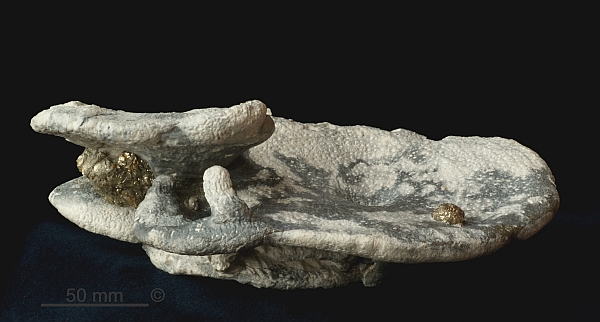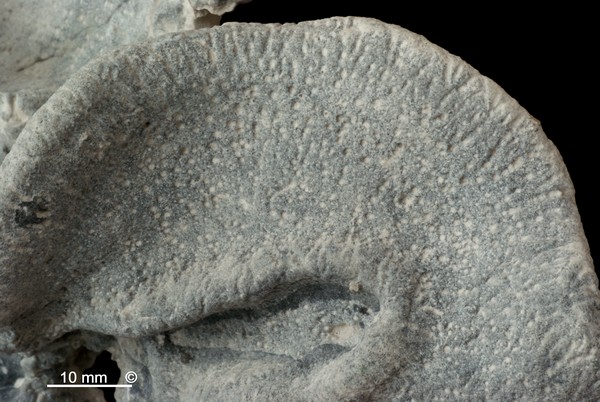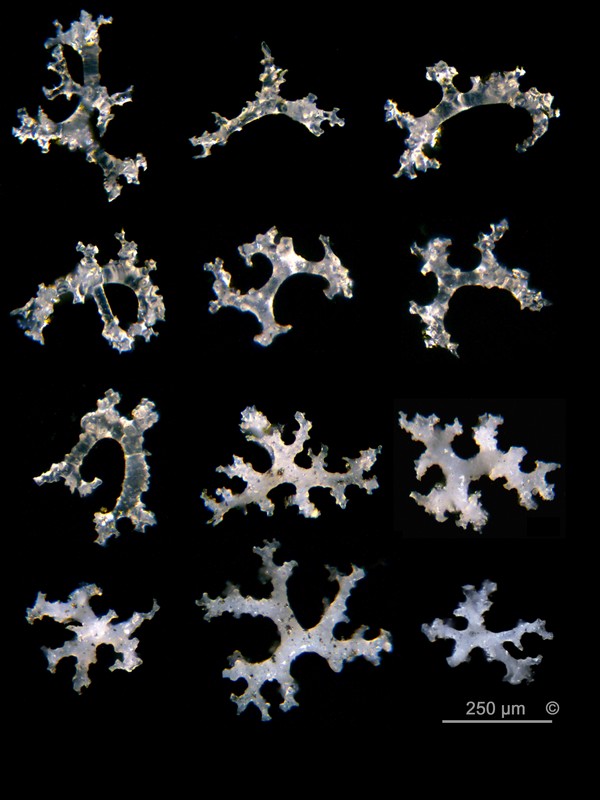
Figure 1 - Azorica pfeifferae. Alemannia, Höver.

Figure 2 - Azorica pfeifferae. Alemannia, Höver.
Same specimen as in Figure 1.

Figure 3 - Azorica pfeifferae. Alemannia, Höver.
Synonyms:
none
Occurence:
Alemannia, Höver, Lower Campanian (senonensis zone). Very rare.
To the author's knowledge, Azorica species have not been reported from German localities previously. Presently, only two specimens from Höver (Figures 1 through 3), tentatively identified as Azorica pfeifferae, are known.
Macroscopically, the two specimens show typical features of Azorica pfeifferae, consisting of complex clusters of convoluted flabellate funnels. The walls are 5 to 7 mm thick, with rounded rims.



